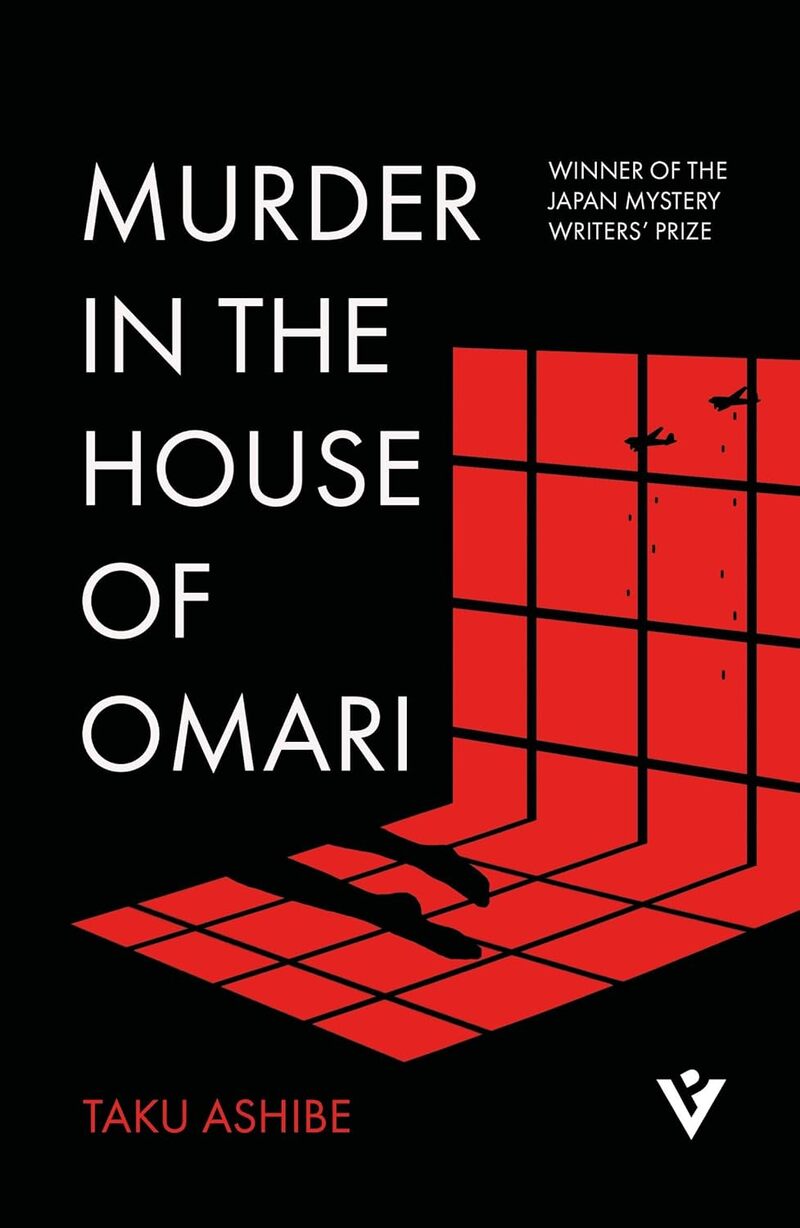At a demolition site in modern-day Osaka, workers unearth an old air raid shelter, sealed for decades. Inside, Murder on the Orient Express by Agatha Christie, The Hollow Man by John Dickson Carr, The Tragedy of the Funatomi by Yu Aoi, and other classic mystery novels are wrapped in a faded cloth, embroidered with “House of Omari” and the merchant’s long-forgotten temari-ball logo. Once the glamorous face of the cosmetics industry, the Omari family saw their fortunes decline with the onset of the second world war—and then the murders begin. The scene for this historical mystery is set by the murderer uttering the following words: “the war, air raids, Osaka, Semba, old merchant families, head clerks, shop assistants, errand boys…”
Originally published in Japanese in 2021, Taku Ashibe’s Murder in the House of Omari was awarded the 2022 Mystery Writers of Japan Award and the Honkaku Mystery Award for Best Fiction. Translated by Bryan Karetnyk, it is one of the few English translations of the author’s work available. Ashibe is a member of the Honkaku Mystery Writers Club of Japan, as were the influential authors Yukito Ayasuji (The Mill House Murders) and Tetsuya Ayukawa (The Black Swan Murders). In the vein of orthodox mysteries, the novel features a diagram of the setting, a long list of characters, and a series of bizarre crimes.
Although the novel is primarily set in the 1940s, earlier scenes from the 1900s to 1930s are interspersed, depicting the family’s illustrious background as well as the economic and societal changes in the lead up to the war. To mitigate any potential confusion from this non-chronological structure, each scene is clearly labeled with the year; each furthermore includes fascinating historical details from the time.
The story takes place in the fictional House of Omari, which includes both the storefront and residence. The House, like the book, is populated by a large cast of characters: the old mistress Taka, the master of the house Shigezo, his wife Kiyoe, and the younger generation: Tsukiko, Fumiko, Taichiro, and Shigehiko. Three employees—the errand boy, head clerk, and housekeeper—also live there. Having been in business since the 1800s, the House of Omari is well-respected throughout the merchant district, and the matriarch of the family has benefitted from this reputation.
Whenever she walked along the streets of Semba, she would be greeted reverently by craftsmen in traditional livery coats, by half-dressed ruffians, by geisha and actors, and youths in school caps. All of this was proof that the House of Omari had achieved an awful lot without even realizing it.
Industrialization and the popularity of Western beauty standards during the Meiji period were a boon to the family business. Later however, war-time regulations prohibited the sale of luxury goods such as cosmetics, and the family pivoted to selling “comfort bags” which were sent to soldiers on the front. With both Omari sons away at war, it is Taichiro’s wife, Mineko who takes the helm of the company. Unfortunately, businesses are in decline across the commercial district.
In the House of Omari’s heyday, hustle and bustle had been the order of the day, but not since the outbreak of the war. The ominous sounds that echoed throughout the house now were not at all what one would expect to hear in a thriving place of business.
Indeed, instead of the sound of the cash register, a mysterious thudding echoes through the house, and they wonder if the footsteps are a harmless prank or a harbinger of something more sinister. When the first murder victim is found under bizarre circumstances, suspicion ripples through the Omari household. And when the second body is discovered, the dread only deepens. As strange events continue, the police are repeatedly called to the house, but
As far as the authorities were concerned at least, it was more serious and unacceptable that a soldier should flee the battlefield than for a series of murders to take place in a merchant’s house in Osaka.
With the war raging, the truth slips further into the shadows, but an unexpected turn of events exposes what was hidden just beneath the surface. At once the story of a merchant family transformed by the upheavals of war and a mystery novel with a startlingly original conclusion, Ashibe’s The House of Omari is a compelling portrait of changing Japan in the mid-20th century.

